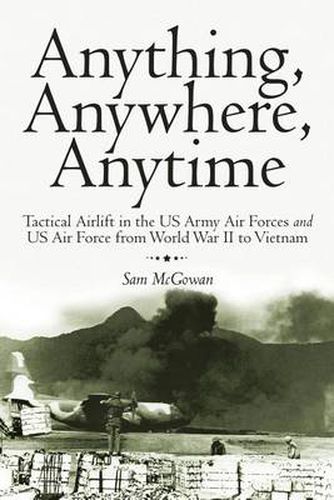Readings Newsletter
Become a Readings Member to make your shopping experience even easier.
Sign in or sign up for free!
You’re not far away from qualifying for FREE standard shipping within Australia
You’ve qualified for FREE standard shipping within Australia
The cart is loading…






This title is printed to order. This book may have been self-published. If so, we cannot guarantee the quality of the content. In the main most books will have gone through the editing process however some may not. We therefore suggest that you be aware of this before ordering this book. If in doubt check either the author or publisher’s details as we are unable to accept any returns unless they are faulty. Please contact us if you have any questions.
In December, 1941 US Army pilots began hauling passengers and cargo around the Philippines after the Japanese attack on Clark Field, thus beginning one of the most important air force missions of World War II. As America greared up to fight the war, dozens of what came to be known as troop carrier squadrons were activated and equipped, usually with Douglas C-47 and C-53 version of the DC-8 transport. Beginning in New Guinea, US Army troop carrier crews became a crucial part of the effort to turn the tide of war. In Europe troop carrier squadrons supported Army airborne forces and provided logistical support for air force squadrons. During the Battle of the Bulge troop carrier crews kept the 101st Airborne Division supplied. After the war, troop carrier squadrons supplied the besieged city of Berlin. Troop carrier crews supported UN forces in Korea, then supported French efforts in Indochina where their successors would become crucial to US efforts in the 1960s and early 1970s. This is their story.
$9.00 standard shipping within Australia
FREE standard shipping within Australia for orders over $100.00
Express & International shipping calculated at checkout
This title is printed to order. This book may have been self-published. If so, we cannot guarantee the quality of the content. In the main most books will have gone through the editing process however some may not. We therefore suggest that you be aware of this before ordering this book. If in doubt check either the author or publisher’s details as we are unable to accept any returns unless they are faulty. Please contact us if you have any questions.
In December, 1941 US Army pilots began hauling passengers and cargo around the Philippines after the Japanese attack on Clark Field, thus beginning one of the most important air force missions of World War II. As America greared up to fight the war, dozens of what came to be known as troop carrier squadrons were activated and equipped, usually with Douglas C-47 and C-53 version of the DC-8 transport. Beginning in New Guinea, US Army troop carrier crews became a crucial part of the effort to turn the tide of war. In Europe troop carrier squadrons supported Army airborne forces and provided logistical support for air force squadrons. During the Battle of the Bulge troop carrier crews kept the 101st Airborne Division supplied. After the war, troop carrier squadrons supplied the besieged city of Berlin. Troop carrier crews supported UN forces in Korea, then supported French efforts in Indochina where their successors would become crucial to US efforts in the 1960s and early 1970s. This is their story.